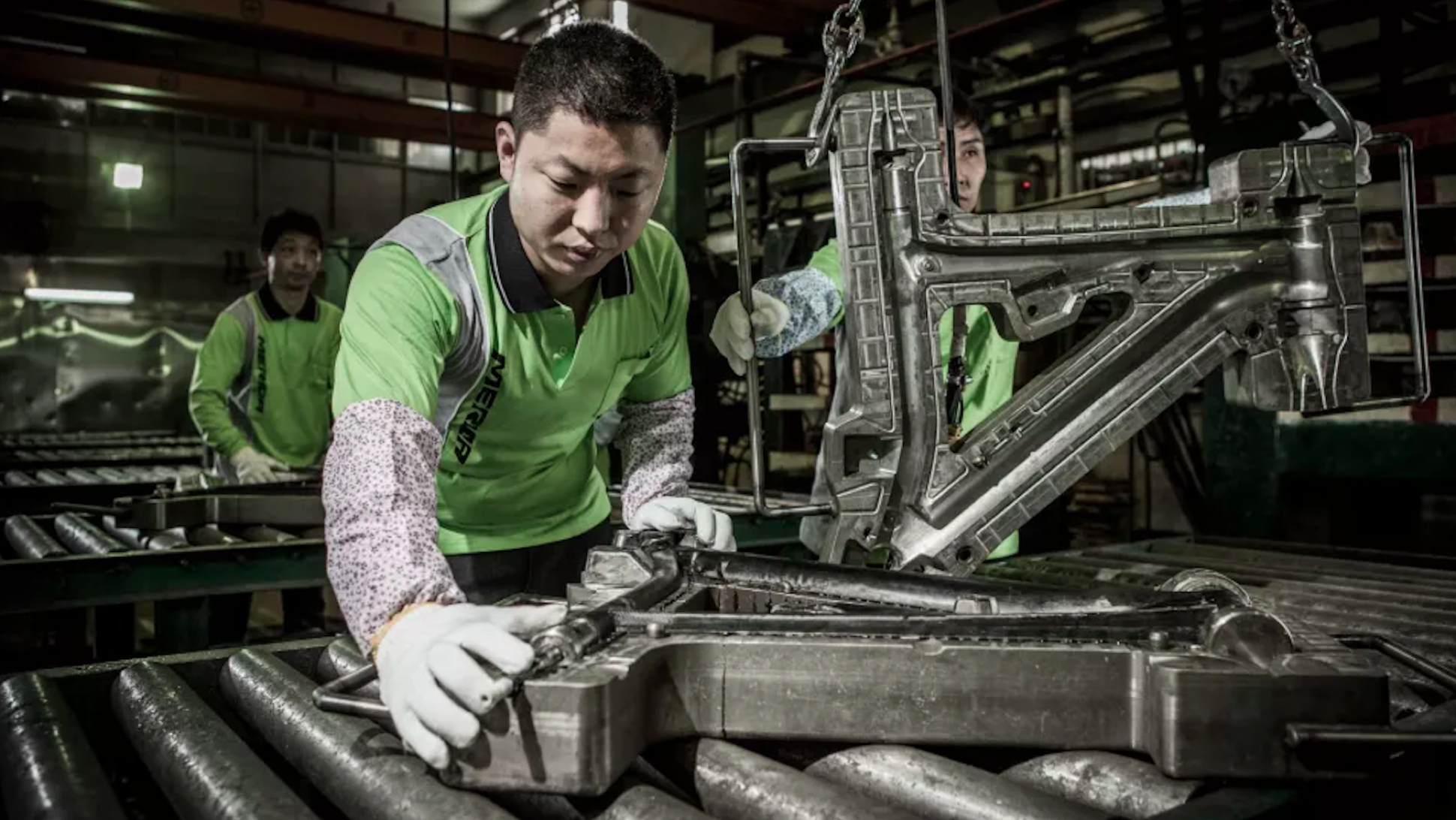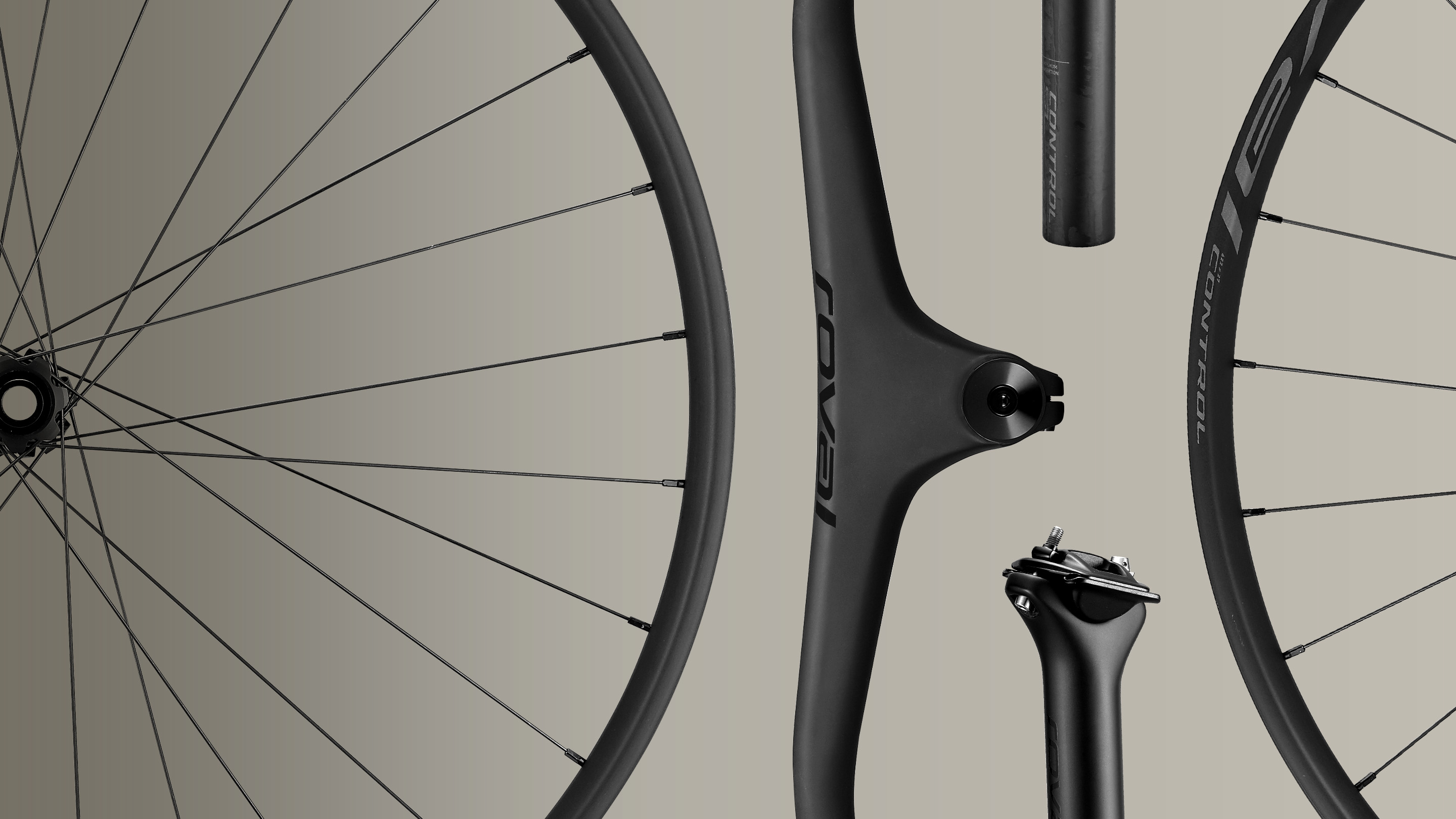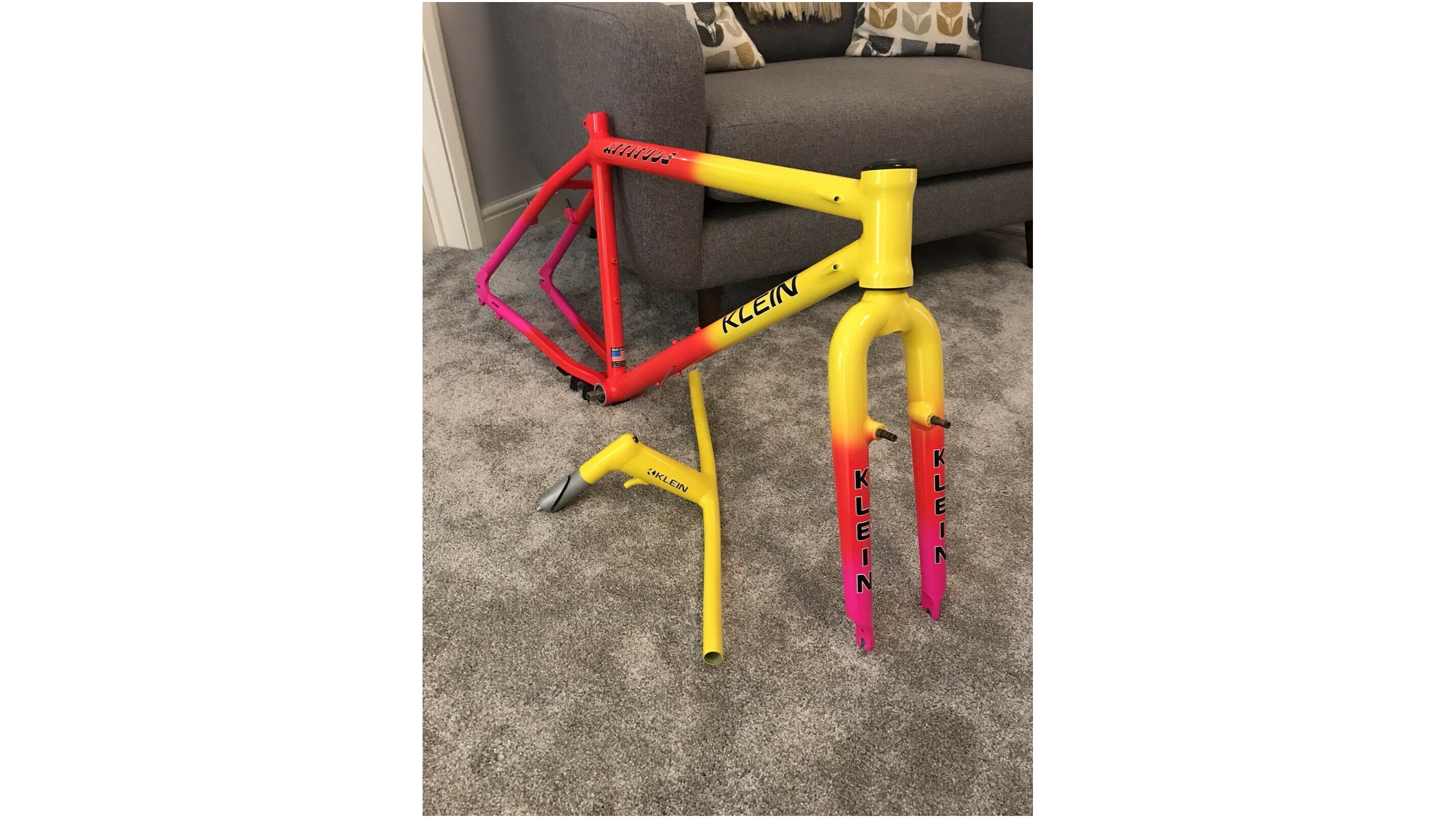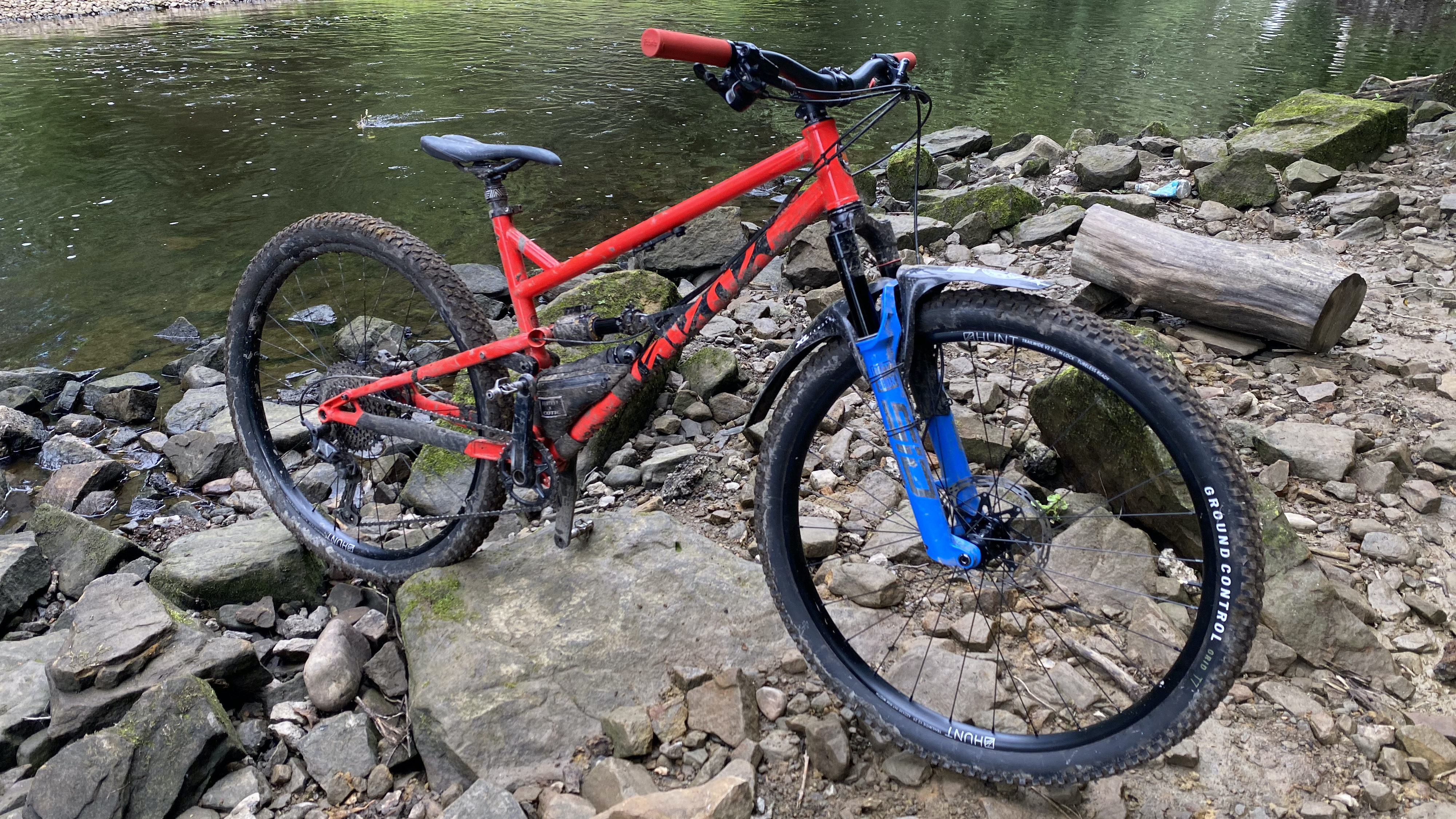Bespoken Word – MTB materialism
Guy Kesteven ponders the pros and cons of various materials in relation to the latest and upcoming product releases and some of his conclusions might surprise you

Sorry that was a bit click baity wasn’t it. “Guy has been riding steel, alloy and carbon things recently and you’ll be amazed what he found out next!” I definitely think it’s worth challenging the preconceptions around the materials used to make bikes if you want to work out what will work best for you, your riding and your budget though.

Carbon vs alloy
First, let's look at the cliche pros and cons of the two main materials – carbon fiber and aluminium alloy. Done right, carbon fiber is lighter for a given strength or stronger for a given weight. However, the process of storing, meticulously laying, pressurizing, baking and finishing multiple sheets of already pricey raw materials always makes it more expensive. Carbon fiber tends to have a plastic rather than elastic deformation/destruction mode. Eg, it reaches a certain load and then fails completely and catastrophically rather than bending like metal does. That makes it very hard to assess for partial crash damage or repair afterwards.
Meanwhile aluminium based alloys are the peoples champion that can still be ridden after denting or even bent back into shape to soldier on some more. And while alloy is presumed not to have the inherent flow and poetry of steel, it’s much lighter. It’s also allegedly not as magical to ride as ‘lifetime’ titanium that’s still the menopause material of choice either, but is definitely a lot less wallet worrying. In other words, aluminium alloy is best used for cheap and cheerful parts that can’t really be distinguished between unless they’ve had extra carving on a CNC machine.

Material history
And to be fair, for a lot of mountain biking history that’s been right. When alloy bikes burst out of Taiwan in the early '90s, they followed pioneers like Klein and Cannondale in using drainpipe sized tubes that were hyper stiff and as comfortable as a pedal to the shins. With pent up riding stress always looking for the weakest link and material forming techniques in their infancy, they didn’t tend to last long either. That vibe was multiplied by the rash of ever lighter, brightly anodized ‘trick parts’ either churned out in China or machined into shape in a shed by whatever US/UK/Euro brand was in fashion that week.
Just as alloy was getting its act together, carbon fiber came out of it’s early years as a child’s construction set using pipes hopefully glued into lugs and morphed into exotic looking monocoque looking frames that smelt of Formula 1 and other fancy stuff. Meanwhile, the aristocrats who stuck with fancy steel and titanium had a vested interest in preserving the ‘mythical’ reputation of those materials for as long as possible. Impressively, they’re still keeping it up despite a concerning amount of brands being the equivalent of those random ‘artisan’ pottery shops you pass when driving to Welsh trail centers, or those Etsy shops that sell basic Chinese gear as exotic handcrafted treasures.
That’s how it’s been for ages too. Steel and titanium are the affordable and aspirational options for those who talk about their bikes in the same way as they do about craft beer and obscure musicians they’ve ‘discovered’. Carbon fiber is the automatic go to for anyone who can afford it. Because as every bitcoin Lamborghini pilot knows, if it’s more expensive it must be better, yeah? And then alloy sits at the bottom of the ‘love ladder’ only being invited to the best bike parties if it tarts itself up with so much anodizing that it looks as natural as a footballer's one night stand.

Material reality
The truth is, the bike is a wonderful example of a mechanism where a remarkable amount of materials can all be viable and relevant if they’re used correctly. Yes, I am wearing my Rider Resilience Beanie and sporting a beard while I’m writing this, but some of my favorite bikes are steel because they ride superbly. Other steel frames I’ve ridden have crushed my soul though and if you’ve ever ridden a steel handlebar or seatpost, you know how grim it can feel. I’ve ripped apart more ‘bike for life’ titanium frames than any other material too, and from extensive experience, more expensive tweaked and twisted Ti tends to fail faster and ride worse than bikes made from basic round tube plumbing.
Carbon fiber can definitely hit performance levels that nothing else currently can and it’s no accident that the ‘Project Nightfury’ XC weapon I’m building up is going to be a festival of ultralight fiber frame, rims, one piece bars, cranks, bottle cages, saddle rails etc. as a I chase a sub 10kg carbon weight. Composite frames and components have more than proved their potential strength at the other end of the spectrum where most gravity racers and senders choose carbon over other materials. More and more brands are also following Santa Cruz / Reserve wheels in offering a comprehensive lifetime warranty, and while it’s not always pretty, carbon fiber can often be repaired pretty easily too. Because while you might not like to admit it, your exotic ‘in debt till you’re dead’ purchase is basically just made of 'bake to set’ gaffer tape and can be patched up accordingly.
Carbon fiber also allows designers a lot more freedom in terms of shaping and building in features like internal storage doors or plumbed cable routing than alloy does. New recyclable composites like ‘Fusion Fiber’ and modular, mainly machine laid frame construction innovations such as Guerrilla Gravity are gradually moving carbon fiber in a less throwaway direction too. Although like other fibers and plastics, there are still some very serious questions hanging over it’s wider environmental impact.
Alloy is definitely going through something of a rebirth however. There are some really good riding premium and affordable alloy bikes out there and some of them like Canyon’s new Neuron are carbon competitive in weight too. In fact, that whole bike is a great example that if you’re on a budget a well equipped alloy bike makes a lot more sense than a carbon frame with worse kit.
Alloy isn’t just a budget choice either. While I can’t name names without getting my sources into trouble, you’d be very surprised how many top gravity riders contracted to use carbon wheels are actually running alloy rims for their better feel and survivability. Specialized have just launched new lightweight Roval wheels using a ‘new alloy’ with custom shot peening process to make it carbon competitive at a much lower cost. They’re not the only ones launching a new alloy wheel set this month either. That’s hot on the heels of the ‘no one saw that coming’ appearance of Reserve alloy wheels with the same lifetime warranty as their carbon hoops.
The alloy XO1 chainset from SRAM’s new T-Type transmission launch is the one that stole the show away from carbon for many riders. Not least because while Race Face have put the cat among the crank pigeons with a lifetime riding warranty on their new Era cranks, risking a failure on the component that supports most of your landing weight is the sketchiest place to save weight. Especially as it sits at the bottom center of your bike and therefore lost weight will make the least dynamic difference in terms of cost effective spending. Don't make the mistake of assuming that because it's metal it's somehow intrinsically more repairable or safer than a composite though. Sure, you can bend alloy rims or gear hangers straight or ride a dented frame and it might work fine, but you're definitely dealing with compromised strength and the same is true of steel or titanium too.

Material gains
In other words, what I’m getting at overall is that there’s no miracle material that does everything better. Carbon fiber is certainly in the lead in terms of strength to weight ratios and it's maturing as a material as molded, short fiber components become more common. That said 3D printing could really change how and where we use metals too - especially as CNC machining is an inherently stress inducing process to put a grained structure through. Steel still definitely has a place as a frame material and it’s utterly unbeatable for chains, cassettes and other high wear areas. Titanium done well (not necessarily expensively) has big cosmetic durability and ride feel wins that keep it relevant. The latest advances mean you can use alloy to make a really high performance piece, a really cheap one or pick a point that suits you anywhere between those extremes.
And that is the real skill when it comes to putting a bike together yourself or picking a complete bike that suits you. Work out what strengths you need where, reference that against your budget and your inherent ability to break stuff and choose materials to suit.

Guy Kesteven has been working on Bike Perfect since its launch in 2019. He started writing and testing for bike mags in 1996. Since then he’s written several million words about several thousand test bikes and a ridiculous amount of riding gear. He’s also penned a handful of bike-related books and he reviews MTBs over on YouTube.
Current rides: Cervelo ZFS-5, Specialized Chisel, custom Nicolai enduro tandem, Landescape/Swallow custom gravel tandem
Height: 180cm
Weight: 69kg
